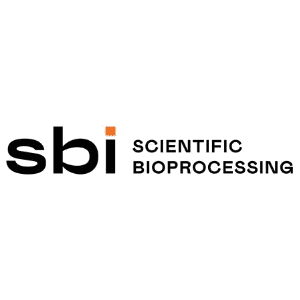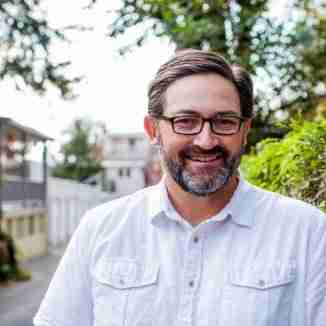
In Conversation with John Moore, President of Scientific Bioprocessing Inc. (SBI)

Scientific Bioprocessing Inc. (SBI) is on a mission to help scientists and engineers de-risk drug development through leading-edge technology that improves the efficiency, effectiveness, and reproducibility of cell culture and bioprocessing.
SBI’s single-use optical sensors provide non-invasive, real-time measurement and data monitoring across all form factors from small flasks to the largest bioreactors, enhancing development consistency and scalability. SBI offers a suite of optical sensor products that will be a key component to the biopharma industry’s push to standardize processes, reduce development costs, and speed up time to market across cell and gene therapy, tissue engineering, organ-on-a-chip development, and the wider biotech and pharma sectors.
Given the advanced biomanufacturing challenges faced by these industries, and the Food and Drug Administration’s (FDA) push for stronger regulatory controls via its Process Analytical Technology (PAT) guidance, we thought it an opportune time to talk with John Moore, SBI’s President and the Chairman of the Board of Scientific Industries, Inc., SBI’s parent company.
What is Scientific Bioprocessing, Inc.’s (SBI) origin story and history?
Dr. Govind Rao at the University of Maryland, Baltimore County, and his team from the Center for Advanced Sensor Technology developed optical sensors and licensed them to Fluorometrix, which was then acquired by Scientific Industries in 2011. The sensors were licensed to Sartorius for use in their Ambr and Cultibag systems.
We were in on the ground floor in the very early days of single use technology and the data revolution that is happening in bioprocessing. Since 2011, Sartorius and General Electric have used the licensing of our sensors to sell over $1B worth of products.
The future of personalized medicine is bright. Cell and gene therapy, regenerative medicine, and organ-on-a-chip are virtually untouched by the benefits of optical sensors. What’s really exciting about the market is this: even in biologics only 30% of the 30 approved drugs use single-use bioreactors, yet there are some 1,000 biologic drugs in the clinic right now and 800 are using single-use bioreactors. The industry is really moving away from reusable, stainless steel vessels to disposables. The demand for optical sensors is going to grow dramatically.
Tell us about your entrepreneurial background and your journey to becoming the SBI’s President and the Chairman of the Board for SBI’s parent company, Scientific Industries, Inc.
I started off as an investment banker in 1987 and our team took Organogenesis, the first regenerative medicine company, public. In 2002, I acquired a portfolio of 16 drug delivery assets from Elan Pharmaceuticals with $148M in funding from the Anglo Irish Bank to buy the portfolio. The transaction occurred over a weekend and was credited with saving Elan Pharmaceuticals from bankruptcy.
What I learned through that process was how some of the most promising companies in our portfolio failed and how some of the most underrated companies ended up having success. I learned how important data and clinical trials are to the success of companies. Wall Street has evolved to understand that the initial scientific insight that created companies is important but not sufficient to create economic value for the shareholders or to benefit society.
As Chairman of Trialogics, a leading clinical trial software provider, I have observed that, remarkably, 50% of clinical trials are still run on paper. I am excited to invest and lead companies like Scientific Industries and SBI that are focused on removing process inefficiencies to improve drug development process and FDA approval chances. The common theme is creating simple, affordable tools to help speed new, safe and effective drugs through approval into the hands of doctors and patients.
What are SBI’s mission and vision?
SBI’s mission is to empower our customers to accelerate the discovery of safe, effective, and affordable solutions in the biotech industry. Our optical sensors can be installed in the smallest scale, early development vessels all the way through clinical trials and downstream manufacturing post-approval. We believe we can deliver the instrumentation and sampling that is required to wring huge inefficiencies out of the development process.
In a recent webinar on lab automation, you mentioned that biopharma is “chronically undersampled.” Can you elaborate on what you meant by this and how this issue fits within the larger challenges facing personalized medicine manufacturing?
Historically, testing has been done offline and that requires taking samples, risking contamination, and creating an asynchronous effect that runs the risk of losing a million dollar batch of biologics because it wasn’t sampled in real-time.
SBI’s new generation of sensors empowers bioprocessing engineers to understand the design parameters for an experiment at the earliest conception of the product. The sensors are then placed in the single-use bioreactors and are able to tell the engineers when the batch is going out of the design parameters and they can immediately course-correct by changing what they are feeding the cells or by adjusting the pH of the culture, for example.
In addition, there have been three waves of Artificial Intelligence. The current wave requires accurate, real-time data to be able to make its calculations. The current electrode sensors can’t provide this. Our optical sensors are the size of a hole-punch and you can use them to map bioreactors, you can put tens or even hundreds of sensors throughout a bioreactor or deploy them across the process to determine your critical quality attributes. You can’t use an electrode or even an optical sensor in a probe format in the earliest stages of development that use multi-well plates and flasks. Our products are available in a variety of form factors within inexpensive kits so that it can be as useful for a cell scientist or a process development person as a telescope is for an astronomer, or a microscope for a microbiologist. We believe all kinds of incredible new insights are going to emerge because of the proliferation and affordable nature of our sensors.
I have a friend that does business development for a large pharmaceutical company; he has personally led over 50 development and licensing deals for biotechs. He told me that they are willing to pay twice as much for an asset that has a strong data package than for an asset that does not. Often scientific researchers focus on the scientific breakthrough and not on documenting the early-stage experiment design and critical quality attributes. Entrepreneurial scientists will see a big benefit by capturing early-stage development data packages because this makes their asset much more attractive to licensors. Strong data packages save years of research work and patent life for the licensors of the technology. Our sensors can help build these strong data packages right from the start.
The FDA is pursuing increased quality control regulations via its Process Analytical Technology or PAT initiative. What does this mean for personalized medicine and how can a company like SBI help move bioprocessing toward stronger quality assurance and alignment with PAT?
PAT is guidance from the FDA. What the FDA is trying to do is encourage the voluntary implementation of quality assurance systems as early as possible in the process. The FDA wants consistent QA processes from early-stage experiments through FDA submission and post-marketing.
Just like a good data package is critical for convincing a licensor to take a risk on a project, PAT will improve the likelihood of FDA approval. The FDA doesn’t care about whether you have a 10% or 70% yield, they want to know you have the critical quality attributes and monitoring to always deliver that consistent 10% or 70% yield. The FDA wants to know that you have a plan of action for QA.
SBI’s sensors and our products can help our clients and partners increase experiment and process repeatability because we offer non-invasive, scalable, automated and real-time data monitoring that is critical to meeting the FDA’s PAT guidance for quality assurance.
Automation, remote monitoring, and closed-loop systems that eliminate human inputs and manual processes seem to be where cell culture and bioprocessing are headed. How realistic is this goal, how long might it take to achieve and what does it mean for existing and aspiring lab scientists and engineers?
Biologics drugs today span from large scale, big batch biologics to small scale personalized therapies using autologous cells. One of our partners is the cell therapy company Adva Biotechnology. Adva’s CEO and Founder Ohad Karnieli’s vision is to put single-use bioreactors at the point-of-care in hospitals. His vision illustrates the personalized medicine field’s aspirations.
The industry will need optical sensors in both large scale manufacturing and for personalized medicine to broadly and affordably deliver its miracles to patients.
One of the less discussed benefits of increased automation and one-touch controls is that cell scientists get to focus on great science and not on just labor intensive sampling and moving liquids. Increased automation and the removal of manual inputs creates more space for the genius of observation and invention in the lab.
How will patients benefit from increased lab automation, stronger sensing that provides real-time data monitoring, and greater quality control across the development and manufacturing process?
It will mean faster FDA approvals, lower costs for patients, and safer therapies. Many cell therapies today cost $500K per patient, and the industry needs to lower this cost to around $100K per patient. Strong quality control and increased repeatability will improve safety, ultimately enabling more drugs to be approved by the FDA faster because of reduced risk and increased regulatory compliance.
SBI recently brought on Reinhard Vogt, who had a storied three-plus decade run at Sartorius. What does his addition mean to SBI?
A lot of success boils down to three things: credibility, visibility, and understanding the theory of your business. Reinhard brings all three of these to SBI. In our case, the world is full of small companies that have developed individual sensors that don’t have the commercial muscle to educate the market. We are creating a company that is poised to redefine cell culture.
Reinhard’s vision is that there is a big gap in the market. He believes the market doesn’t need another small sensor company; the market needs a single, global, one-stop-shop provider for almost any conceivable monitoring and process control modality. He brings a very practical and valuable commercial perspective to SBI.
What’s next for SBI?
We are aggressively in-licensing new sensor modalities and are on the acquisition trail. We are part of NIIMBL, ARMI, and ReMDO. What you’ll be seeing from SBI is collaboration with industry partners at these organizations, and we will be raising non-dilutive funding for adding additional sensing modalities for measuring glucose, lactate, secreted genes, and other key measurables.
There will be some mind-blowing new functionality coming and scientists will be able to design drugs that they never could have dreamed of without the insights they gain from these sensors.
- About the Author
- Latest Posts
Steve brings nearly twenty years of experience in marketing and content creation to the WorkForce Genetics team. He loves writing engaging content and working with partners, companies, and individuals to share their unique stories and showcase their work. Steve holds a BA in English from Providence College and an MA in American Literature from Montclair State University. He lives in Frederick, Maryland with his wife, two sons, and the family dog.





